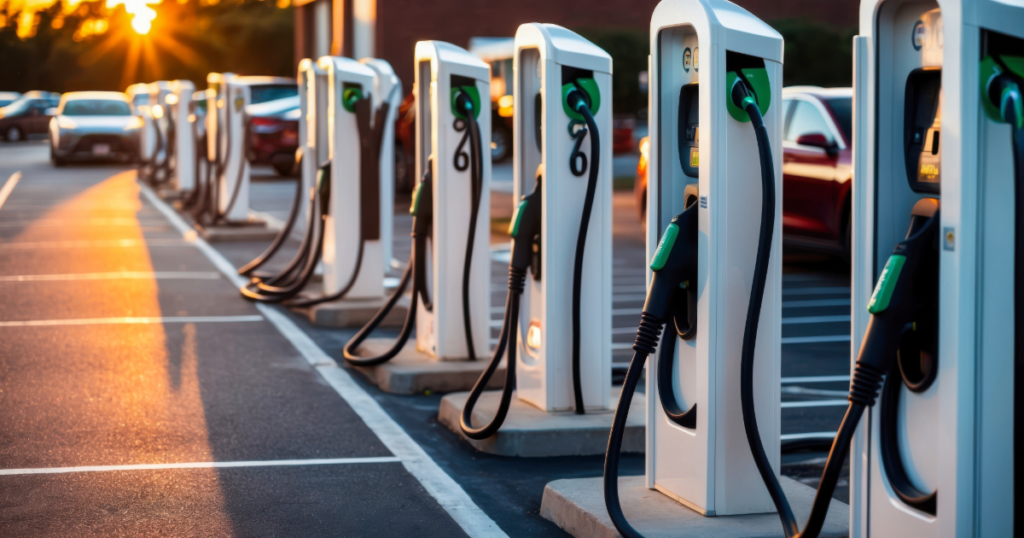As electric vehicles (EVs) continue to revolutionize transportation, many drivers in Truro, Nova Scotia, are making the switch to sustainable and eco-friendly cars. At New Wave Auto Sales, we’re committed to helping you make the most of your EV experience. Whether you’re a seasoned EV owner or just getting started, mastering the nuances of EV charging is essential for a smooth and cost-effective driving experience.
In this guide, we’ll share practical tips, answer frequently asked questions, and dive deep into the world of EV charging. Let’s plug in and get started!
Why EV Charging Knowledge Matters
Understanding how to charge your EV efficiently can save you time, money, and energy. With the growing network of EV chargers in Truro, Nova Scotia, and beyond, knowing how to navigate this infrastructure is crucial. Here’s what we’ll cover:
- Types of EV Chargers and Charging Speeds
- Best Practices for EV Charging
- Tips for Charging at Home
- Public Charging: What You Need to Know
- FAQs About EV Charging
1. Types of EV Chargers and Charging Speeds
There are three primary levels of EV chargers, each catering to different needs:
Level 1 Chargers
- Description: Standard 120V outlet.
- Charging Speed: Adds 3-5 km of range per hour.
- Best For: Overnight charging at home.
Level 2 Chargers
- Description: 240V outlet, often installed at homes or workplaces.
- Charging Speed: Adds 20-40 km of range per hour.
- Best For: Faster home charging or extended daily driving needs.
Level 3 (DC Fast Chargers)
- Description: High-powered public chargers.
- Charging Speed: Adds 80% charge in 30-60 minutes for most EVs.
- Best For: Long-distance travel and quick top-ups.
Pro Tip: Check out PlugShare to find charging stations in Truro and across Nova Scotia.
2. Best Practices for EV Charging
Maximize your EV’s battery life and minimize costs with these tips:
Optimise Charging Times
- Use Off-Peak Hours: Many utility companies in Nova Scotia offer lower rates during off-peak hours. Schedule your home charging accordingly.
- Public Charging Tip: Avoid peak hours at fast chargers to reduce wait times.
Maintain Battery Health
- Avoid Extreme High or Low Charges: Keep your battery between 20% and 80% for everyday use.
- Limit Fast Charging: While convenient, frequent use of DC fast chargers can degrade your battery over time.
Plan Your Charging Stops
- Use Navigation Tools: Apps like PlugShare and ChargePoint help you locate chargers and plan your route.
- Keep a Backup Plan: Know alternative charging spots in case your first choice is occupied or out of service.
3. Tips for Charging at Home
Install a Level 2 Charger
For the best at-home charging experience, consider installing a Level 2 charger. Local electricians in Truro, Nova Scotia, can help set up the system safely and efficiently.
Leverage Rebates and Incentives
The Canadian government and Nova Scotia offer rebates for EV chargers. Visit Nova Scotia’s EV Incentive Programme for details.
Use Smart Chargers
Smart chargers allow you to monitor energy use, schedule charging, and even integrate with renewable energy sources like solar panels.
4. Public Charging: What You Need to Know
Public charging stations are becoming increasingly common in Truro and surrounding areas. Here’s how to make the most of them:
Know Your Connectors
- Common Standards: CCS, CHAdeMO, and Tesla Superchargers.
- Compatibility: Ensure your EV is compatible with the charger’s connector type.
Be Mindful of Charging Etiquette
- Don’t Hog Chargers: Once your car is charged, move it to free up the spot for others.
- Report Issues: Notify the station provider if a charger isn’t working.
Take Advantage of Local Charging Networks
- Truro’s growing EV infrastructure includes popular networks like Flo and Petro-Canada.
- Many local businesses and public areas are also adding chargers—perfect for combining errands with charging.
5. FAQs About EV Charging
How Much Does It Cost to Charge an EV in Truro, Nova Scotia?
The cost varies based on the charging station and your electricity rates. Home charging is typically the most affordable, costing around $2-$5 per 100 km.
How Long Does It Take to Charge an EV?
Charging time depends on the charger level and your EV’s battery capacity. Level 1 takes the longest, while Level 3 can provide a substantial charge in under an hour.
Are There Enough Charging Stations in Nova Scotia?
Yes! Nova Scotia’s EV charging network is expanding rapidly. Use apps like PlugShare to locate stations near Truro and beyond.
Can I Charge an EV in the Rain?
Absolutely. EV chargers are designed to function safely in various weather conditions, including rain.
Local SEO: Charging in Truro, Nova Scotia
At New Wave Auto Sales, we’re proud to support the growing EV community in Truro. Visit our blog for more insights and resources tailored to Nova Scotia drivers. Additionally, explore charging options at:
- Victoria Park’s public chargers.
- Local shopping centres like Truro Mall.
- EV-friendly restaurants and hotels in downtown Truro.
External Resources for EV Owners
Conclusion
Switching to an EV is a smart, sustainable choice. By mastering these EV charging tips, you’ll enjoy seamless travel across Truro, Nova Scotia, and beyond. At New Wave Auto Sales, we’re here to guide you every step of the way—from selecting your EV to understanding the ins and outs of charging.
Check out our inventory of electric vehicles and feel free to contact us with any questions. Let’s drive the future, one charge at a time!

